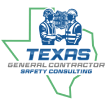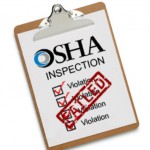Update August 20201:
OSHA’s electronic injury and illness reporting requirements remain in effect although many impacted companies remain unaware of this requirement.
We are updating this blog to make employers aware and to answer basic questions:
Last week OSHA announced a significant new rule which will mandate that virtually all employers in high hazard industries (including manufacturing and construction) submit their safety record data to electronically OSHA each year (ie: OSHA 300 logs). OSHA will then publish those records on-line for all to see.
This new rule is the latest in a series of moves by OSHA over the past 2 years to ramp up pressure, scrutiny and risk for US employers who fail to manage their health and safety management programs (ie: new injury reporting rules introduced in January 2015 and pending 80% OSHA fine increases to go into effect by August of this year).
What does this new rule mean for employers?
Heightened Risk For OSHA Enforcement Activities:
– Prior to this new ruling, OSHA wouldn’t necessarily know about a company’s poor safety record because there wasn’t a broad requirement for employers to submit this information. Since OSHA is now going to require submission of OSHA 300 logs each year (see details below), they will soon know when a particular company has high injury and illness rates.
- OSHA currently has limited means for soliciting injury and illness data (OSHA 300 logs) from employers through their “OSHA Data Initiative” program, which typically yields safety record submissions from 80,000 companies per year. This new rule will increase that reach to an estimated 150-200,000 companies per year! Companies who fail to submit data will likely face civil penalties.
- OSHA has other means of gathering this data, such as high loss rates reported to WC carriers, who can then report to OSHA, which can then trigger a request from OSHA for 300 logs from those companies.
– Each year OSHA targets employers with high injury and illness rates through their Site Specific Targeting List (“SST”). This list targets employers with high DART scores (Days Away, Restricted Duty & Transfer). Typically any scores above 7 will get a particular company added to the list. This new ruling will likely significantly increase the number of employers added to the SST list.
- SST inspections are typically “comprehensive” in nature, meaning that inspectors will typically scrutinize ALL elements of a company’s OSHA compliance including employee training records, written programs, record keeping requirements and physical hazards. These inspections can last a day, several days, or even weeks. Comprehensive inspections result in the highest fines and penalties which often run into the $tens or even $hundreds of thousands of dollars (soon to rise even higher due to pending 80% fine increases).
Reputational & “Bottom Line” Risks:
• Potential employees will soon be able to view and compare various employer safety records in order to determine who they might want to work for (or not want to work for). In an increasingly tight labor market, this can cause major problems for companies with a poor safety record.
• Competitors will be able to view each other’s safety records and use that information against companies with a poor record.
• Customers will also be able to view this information, and potentially make buying decisions based upon vendor safety performance.
As OSHA put it:
“Since high injury rates are a sign of poor management, no employer wants to be seen publicly as operating a dangerous workplace,” said Assistant Secretary of Labor for Occupational Safety and Health Dr. David Michaels. “Our new reporting requirements will ‘nudge’ employers to prevent worker injuries and illnesses to demonstrate to investors, job seekers, customers and the public that they operate safe and well-managed facilities. Access to injury data will also help OSHA better target our compliance assistance and enforcement resources at establishments where workers are at greatest risk, and enable ‘big data’ researchers to apply their skills to making workplaces safer.”
Other Details Regarding The New Ruling:
• Employers with more than 250 employees that are required to maintain injury and illness records will be required to electronically submit their OSHA 300, 300A and 301 forms.
• Small companies in high hazard industries with between 20-249 employees will be required to submit their 300A logs electronically each year. THIS INCLUDES ALL CONSTRUCTION AND MANUFACTURING BUSINESSES.
• The rule takes effect on January 1, 2017. Employers must submit their OSHA 300A annual summaries by July 1, 2017. The requirements for the submission of 300 logs and 301 reports do not take effect until 2018, with those forms being due on or before July 1, 2018. Beginning in 2019, the forms will be due by March 2 every year.
• The new rule also has provisions requiring employers to inform employees about their rights to report injuries and illnesses, and that employees cannot be retaliated against by employers for doing so.
Between this new rule, and OSHA’s recently updated injury reporting rules (employers must contact OSHA whenever an employee injury results in an in-patient hospitalization, amputation or loss of an eye within 24 hours, and must report all fatalities within 8 hours) and plans to increase OSHA fines by 80% no later than August of this year, it’s clear that OSHA is continuing to ramp up their efforts to hold employers fully accountable for failing to manage their health and safety management programs.
Worried That Your Company Isn’t OSHA Compliant?
Call Us At 512-457-0374 Or Click Below For A Free, No Obligation Consultation


